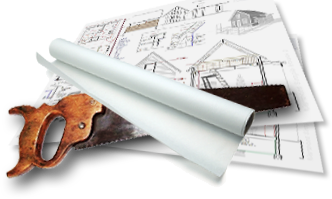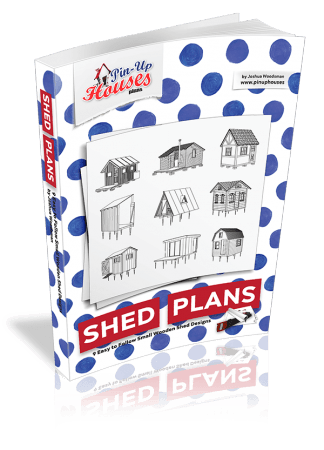Rubber crumb driveways – sometimes called rubber mulch or poured-in-place rubber surfaces – are becoming more common in residential projects. They offer a softer, more flexible alternative to traditional asphalt or concrete, so it is worth reviewing their main strengths and weaknesses before making a decision.Online resources like SafeStep is an assist might be helpful for homeowners looking into modern surface solutions like https://safestep.pro/rubber-crumb-driveways/. SafeStep can help you learn how rubber crumb systems are made and where they work best. There is no one perfect answer for every property, though. It’s crucial to think about both sides of the issue based on the climate, your budget, and your maintenance needs.
What is a rubber crumb driveway?
A rubber crumb driveway is made from small granules of recycled rubber, usually from end-of-life tyres, bound together with a polyurethane resin. The mixture is laid over a prepared sub-base and allowed to cure, forming a continuous, textured surface that can be coloured and patterned.
Unlike loose rubber mulch, a bonded rubber crumb driveway is monolithic: the granules are fixed in place by the binder. This provides structure and durability while keeping some of the flexibility and cushioning properties of rubber. In suitable conditions it may also be installed as an overlay on top of existing hard surfaces that are still structurally sound.
Key advantages of rubber crumb driveways
Rubber crumb driveways offer a range of practical benefits that make them a popular choice for modern homes and outdoor spaces. Below are the key advantages that highlight their performance, durability, and user-friendly features.
1. Slip resistance and safety
One of the best things about rubber crumb is that it doesn’t slip. When you mix rubber granules with a binder, you get a surface that has high grip, even when it’s wet. This can lower the danger of falls compared to smoother concrete or polished stone.
For households with children, elderly relatives, or people with reduced mobility, the slight “give” underfoot can make day-to-day movement on the driveway more forgiving and comfortable.
2. Comfort and noise reduction
Rubber is more elastic than mineral aggregates. A rubber crumb driveway feels softer underfoot and can be more comfortable to walk on for extended periods. When vehicles drive over the surface, tyre noise is often muted compared with hard, rigid pavements.
Where the driveway runs close to windows or outdoor seating areas, this can contribute to a quieter, more pleasant environment.
3. Permeability and drainage
Many rubber crumb systems are designed to be porous. Water can pass through the gaps between the granules and then drain into the prepared base and subsoil, rather than running across the surface. When properly designed, this can help reduce puddles, limit surface water runoff, and lessen the likelihood of ice forming in shallow depressions.
In regions with heavy rainfall or where sustainable drainage is a planning requirement, a permeable rubber crumb driveway can therefore be a meaningful advantage.
4. Flexibility and crack resistance
Rigid pavements such as concrete are prone to cracking when the sub-base moves, tree roots expand, or freeze–thaw cycles occur. Rubber crumb, by contrast, has some elasticity. Minor movement in the base is more likely to be absorbed without creating visible cracks in the surface.
Good ground preparation is still essential, but the material generally tolerates small movements better than many rigid alternatives.
5. Design versatility
Because the surface is mixed and laid in place, there is scope for design variation. Installers can combine colours, create borders, or mark parking bays and walkways with contrasting patterns.
This flexibility allows the driveway to be tailored to the style of the property, from neutral tones to more distinctive mixes. Contrasting colours can also be used to highlight edges, steps, or changes in level, which may improve visibility and safety.
Main disadvantages and limitations
Despite their many benefits, rubber crumb driveways also come with several drawbacks that should be considered before installation. The following points outline the main disadvantages and limitations associated with this type of surface.
1. Initial cost
In many markets, rubber crumb driveways sit in the mid-to-upper price band compared with conventional asphalt or basic concrete. The specialist materials and labour involved can make the upfront cost higher than some alternatives.
For homeowners on a tight budget, this may be a decisive factor. Even if the surface offers benefits in comfort and safety, those advantages have to be balanced against what can realistically be invested in the project.
2. Colour stability and appearance over time
Although pigments are used to colour the rubber granules, exposure to ultraviolet (UV) light can cause some fading over time, especially for brighter or very dark shades. The surface can also collect dust, organic matter, or tyre marks, gradually altering its appearance.
Regular sweeping and occasional washing can help manage this, but expectations should remain realistic: a rubber crumb driveway is unlikely to look identical after several years of use to how it appeared on the day of installation.
3. Maintenance and repairs
People often say that rubber crumb surfaces don’t need much care, yet they do. Some common activities are sweeping every now and again, picking up leaves and other trash, and washing gently to keep dirt and plant growth at a minimum. Algae or moss may grow in shady or damp regions. This might make the surface less slip-resistant for a short time, and it will need to be cleaned using the right tools.
Localised damage from sharp objects, chemical spills, or heavy point loads can usually be cut out and patched. However, matching the colour and texture of a weathered surface is not always straightforward, so repairs may remain visible, particularly on uniform, single-colour driveways.
4. Environmental considerations
Rubber crumb is frequently produced from recycled tyres, which helps divert waste from landfill. At the same time, there are ongoing discussions about the potential release of small particles and the broader environmental impact of rubber products as they age and wear.
Homeowners concerned about sustainability may wish to ask questions about the source and composition of the rubber, any additives used in the system, and options for recycling or responsible disposal at the end of the surface’s life.
When does a rubber crumb driveway make sense?
A rubber crumb driveway is probably the best choice if safety, comfort, and design flexibility are very important to you. Some common situations are family houses where the driveway is used as a place to play or do things, properties with sloped access where slip resistance is important, and projects where a permeable surface is needed for drainage or planning reasons.
In contrast, if the primary objective is the lowest upfront cost, or if the driveway must regularly carry very heavy vehicles or machinery, other materials such as reinforced concrete or traditional asphalt may be more appropriate.
Conclusion
Rubber crumb driveways offer a combination of safety, comfort, and design versatility, supported by good slip resistance and the possibility of permeable construction. At the same time, they come with higher initial costs than some traditional options, require appropriate maintenance, and raise questions about long-term appearance and environmental impact.
In the end, the best decision depends on how you rank safety, looks, cost, and the environment. By weighing the advantages and disadvantages in the context of your own property and usage patterns – and consulting specialists where needed. SafeStep is a professional team that can assess your site and propose suitable rubber crumb solutions – you can decide whether a conventional surface or a rubber crumb driveway is the better long-term option.








